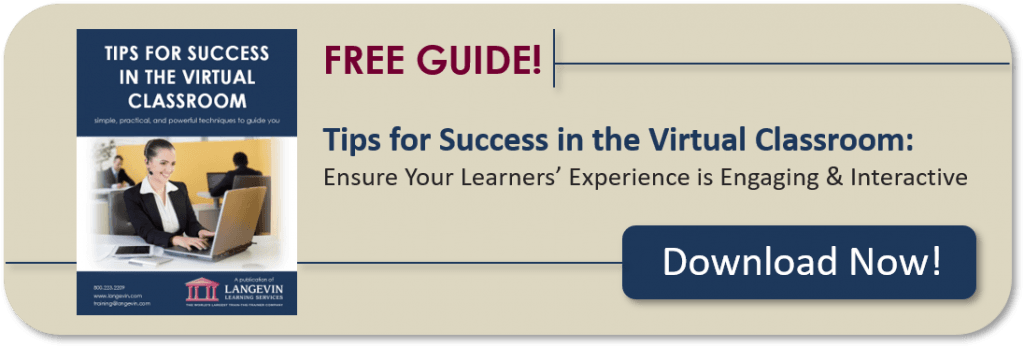Photo by: Fizkes via Canva
One of my favorite things about the virtual classroom is how simple it is to get everyone engaged at the same time. We call this technique simultaneous interaction. It allows the facilitator to obtain input/feedback from all participants at the same time, without it being overwhelming, chaotic, or time-consuming.
Depending on the tools in your platform, learners can interact simultaneously by commenting in chat, responding to polls, or writing on the whiteboard. The facilitator can then comment on what is being shared and use the information to direct learners accordingly.
In contrast, consecutive interaction occurs when learners are asked to give a verbal response or interact with the virtual platform in a sequential manner, one after another. It’s used often in the traditional classroom but should be limited in the virtual classroom. In fact, a well-balanced virtual session typically includes, on average, three times as many simultaneous interactions compared to consecutive ones.
So, why do we prefer simultaneous interactions? Well, they keep all learners engaged and give everyone the opportunity to share and add value, without taking up too much time. They allow introverts to share their thoughts without judgement and everyone to collaborate in real time.
Here are some specific examples of how to build simultaneous interaction into your virtual sessions:
- Ask learners to cast their vote on which approach is best, using a poll.
- Ask learners to agree/disagree with a statement, using the feedback icons.
- Have learners share lessons learned from the most recent software implementation, using chat.
- Show an image of a workstation in a fast-food kitchen and ask learners to identify key elements that are unsafe, using chat.
- Have learners write their favorite food on the whiteboard. Then, invite others to vote for their preference using the annotation tools.
Consecutive interaction should be used strategically in the virtual classroom. It promotes a sense of community by allowing learners a chance to share personal experiences and reduces the feeling of isolation. It also provides auditory variety, especially when the facilitator has been doing most of the talking.
When it comes to simultaneous engagement, the virtual classroom has the upper hand. We can rarely engage everyone at the same time in the traditional classroom. Typically, you’ll ask an open-ended question and learners will wait their turn to respond. This only engages one person at a time, while the others listen.
For even more tips on how to maximize engagement in the virtual classroom, check out our workshop, Maximizing Engagement in the Virtual Classroom. What do you do to get everyone involved?

